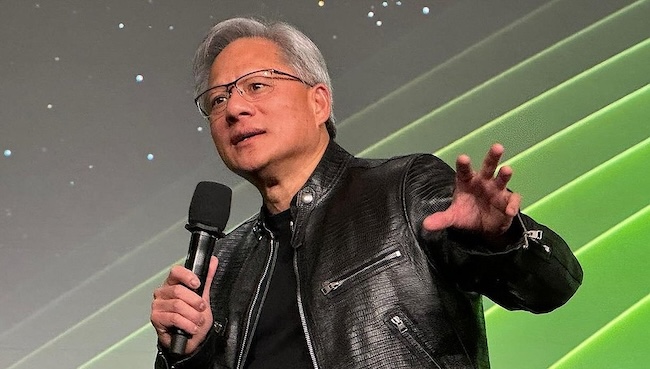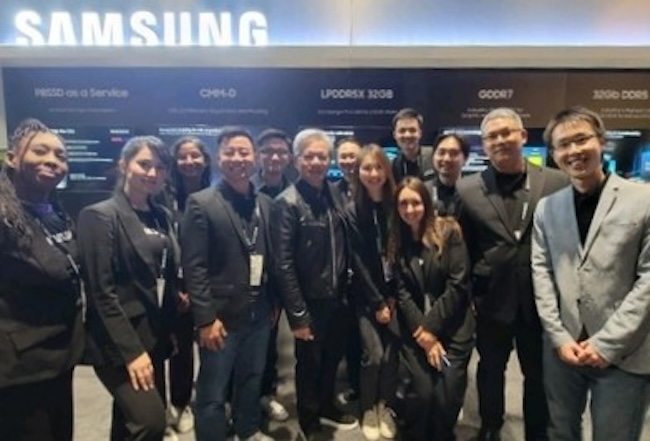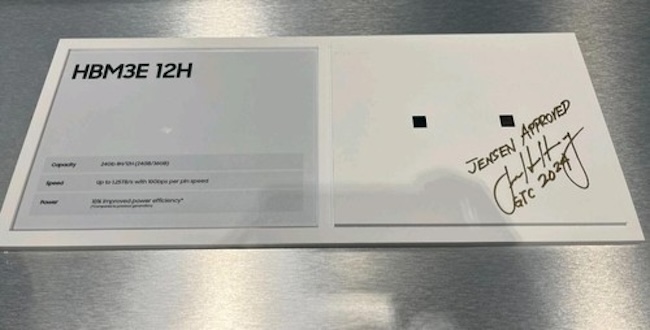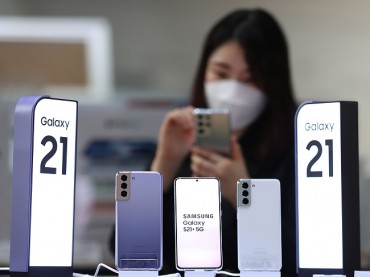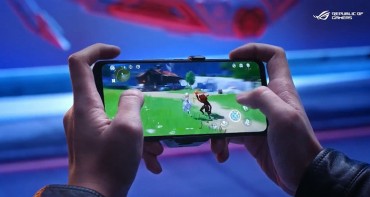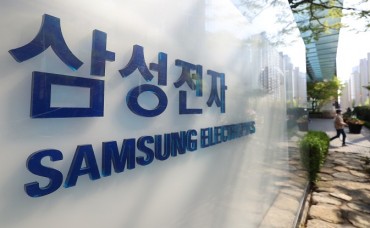SEOUL, Mar. 22 (Korea Bizwire) – Jensen Huang, the chief executive of Nvidia, made a notable appearance at Samsung Electronics’ booth during the annual GTC 2024 developers’ conference in San Jose, California.
There, he left a handwritten signature on Samsung’s upcoming high-bandwidth memory chip, HBM3E, fueling expectations of a stronger partnership between the two companies.
On Wednesday, Han Jinman, Samsung’s president overseeing the Device Solutions Americas operations, shared photos on social media depicting Huang’s visit to the company’s booth.
The images included a shot of the Nvidia CEO’s signature, which read “JENSEN APPROVED,” on a displayed sample of Samsung’s HBM3E 12H (High, 12-layer stack) product.
While the precise meaning behind Huang’s “approval” remains unclear, it is widely interpreted as an expression of optimism toward Samsung’s HBM offerings rather than a confirmation of successful testing.
The conference featured hundreds of exhibitors, including memory manufacturers like Samsung Electronics, SK Hynix, and Micron, as well as tech giants such as Google, Amazon, and Microsoft.
Samsung showcased a physical iteration of its fifth-generation HBM3E memory, the industry’s first DRAM chip stacked 12 layers high.
Employing through-silicon via (TSV) technology, the chip integrates 24 gigabit DRAM dies into a 36-gigabyte package – the largest capacity in the market. Samsung plans to begin mass production of HBM3E in the first half of this year.
High-bandwidth memory (HBM) is a high-performance memory solution that vertically interconnects multiple DRAM chips, dramatically enhancing data processing speeds.
As generative AI models demand rapid and continuous processing of vast quantities of data, HBM and similar high-performance memory chips are considered essential components.
Samsung, SK Hynix, and Micron are engaged in fierce technological competition within the HBM arena.
“I’m delighted to see Mr. Huang’s personal stamp of approval on Samsung’s HBM3E,” stated Han. “We look forward to the next steps for Samsung’s semiconductor business and Nvidia.”
During a media briefing on Sunday, when asked if Nvidia was using Samsung’s HBM, Huang responded that they were not yet doing so but were currently “qualifying it and have high expectations.”
He praised HBM as “an incredibly complex and difficult technology, almost a technological miracle,” commending Samsung Electronics and SK Hynix for their humility.
Following Huang’s remarks, Samsung Electronics’ shares surged 5.63% on Monday, closing at 76,900 won on the KOSPI – the largest daily gain since September 1, 2022.
At the company’s annual shareholders’ meeting, Kyung Kye-hyun, the president of Samsung’s Device Solutions division, addressed criticism over delays in HBM development, stating, “We are better prepared to ensure such an incident never happens again.”
He expressed confidence in regaining leadership in the HBM3 and HBM3E markets, leveraging the 12-layer stacked HBM technology.
Kevin Lee (kevinlee@koreabizwire.com)


